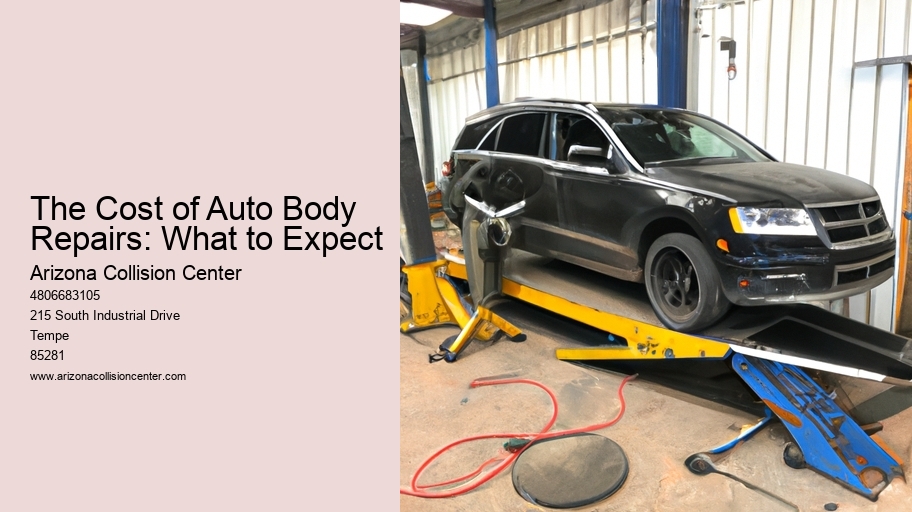Are you prepared for unexpected expenses when it comes to auto body repairs?
In this informative article, we delve into the often overlooked costs associated with repairing your vehicle's exterior.
From the factors that influence repair costs to hidden expenses that can catch you off guard, we provide valuable insights to help you navigate the world of auto body repairs.
Stay tuned as we also share tips on how to save money without compromising on quality.
Don't let surprise bills dampen your freedom on the road.
Factors Affecting Auto Body Repair Costs
One of the key factors that can significantly impact the cost of auto body repairs is the extent of the damage sustained by the vehicle. The more severe the damage, the higher the repair expenses are likely to be.
Factors influencing auto body repair costs can include the type and location of the damage, as well as the materials and labor required to fix it. For example, repairing a small dent or scratch may be relatively inexpensive compared to repairing structural damage or replacing major components.
Additionally, the make and model of the vehicle can also affect repair costs, as some vehicles require specialized parts that may be more expensive or harder to find.
When estimating repair expenses, it is important to consider these factors to ensure accuracy and avoid any surprises.
Average Prices for Common Auto Body Repairs
The average prices for common auto body repairs can vary depending on the extent of the damage and the specific repair required. When it comes to collision repairs, the cost can be broken down into several categories.
For minor damages like scratches or dents, the average cost can range from $50 to $500.
Repairs involving the replacement of parts such as bumpers or fenders can cost between $500 and $1,500.
More extensive damage, such as frame repairs, can cost up to $3,000 or more.
It's important to note that these prices are just averages and can vary depending on factors such as the type of vehicle, location, and the skill level of the repair technician.
Additionally, the cost of auto body repairs may also include labor charges, paint materials, and any necessary alignment or calibration services.
Understanding the Cost of Paint and Materials
To gain a comprehensive understanding of the cost of auto body repairs, it is essential to delve into the expenses associated with paint and materials. Estimating labor costs and comparing prices of different auto body shops can help car owners make informed decisions regarding their repairs.
Here are four key points to consider when it comes to the cost of paint and materials:
Paint Quality: The quality of the paint used can significantly impact the cost. High-quality paints tend to be more expensive but offer better durability and a smoother finish.
Paint Color: Certain colors, such as metallic or custom shades, may require additional steps and materials, resulting in higher costs.
Material Quantity: The amount of paint and materials needed for a repair depends on the size and extent of the damage. Extensive repairs may require more materials and, consequently, higher costs.
Shop Markup: Different auto body shops may have varying markups on the cost of paint and materials. Comparing prices and obtaining multiple estimates can help car owners find the best value for their repairs.
Hidden Expenses in Auto Body Repair Bills
Car owners should be aware of the hidden expenses present in auto body repair bills. When it comes to repairing a damaged vehicle, unforeseen damages and additional labor costs can quickly add up, leaving the car owner with a hefty bill.
Unforeseen damages refer to hidden damages that are only discovered during the repair process. For example, a minor dent may reveal underlying structural damage that requires additional repairs. These unexpected damages can significantly impact the overall cost of the repair.
Additionally, additional labor costs may arise when the repair process becomes more complicated or time-consuming than initially anticipated. It is essential for car owners to carefully review the estimate and discuss any potential hidden expenses with the repair shop to avoid any surprises when the final bill arrives.
Tips for Saving Money on Auto Body Repairs
When looking to save money on auto body repairs, it is important to consider cost-effective strategies that can help minimize expenses.
Here are four tips that can help you save money on your auto body repairs:
Research and choose a reliable auto body shop: Take the time to research and compare different auto body shops in your area. Look for shops with positive reviews, certifications, and experienced technicians. Choosing a reputable shop will ensure that the repairs are done correctly the first time, saving you from costly rework or future issues.
Get multiple estimates: Don't settle for the first estimate you receive. Instead, get quotes from different auto body shops to compare prices. This will give you a better understanding of the average costs and help you negotiate a fair price.
Consider DIY options for minor auto body repairs: If you have minor scratches or dents, you may be able to save money by attempting the repairs yourself. There are numerous DIY tutorials available online that can guide you through the process. However, it's important to assess your skills and only attempt repairs that you are confident in completing successfully.
Take preventative measures: Regularly maintaining your vehicle can help prevent major auto body repairs in the first place. Keep your car clean, protect it from harsh weather conditions, and address any minor issues promptly. This proactive approach can save you money by avoiding costly repairs down the line.
Figuring Out Which Body Shop Will Give You Quality Results at Reasonable Prices
